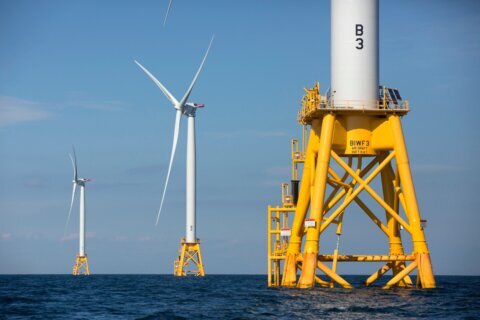The grasses in the waters of the Chesapeake Bay play a big role in the survival strategies of blue crabs, and a recent survey shows the number of acres of bay grasses is up 12%.
That’s good news for the life cycle of blue crabs — and for people who like to eat them. The grasses provide cover for juvenile crabs, allowing them to avoid predators.
But as Doug Myers, the Maryland senior scientist with the Chesapeake Bay Foundation, explains, the grasses in the lower bay — eel grass, in particular — are critical for mating crabs as well.
In order to mate, Myers said the female crab molts so her shell is soft. Just as the eel grass provides hiding places for young crabs, it provides added protection for the adult crabs as the mating process is underway.
Bay grasses are also critical to the populations of waterfowl that feed on them in areas such as the Susquehanna Flats near Havre de Grace.
According to the latest survey by the Virginia Institute of Marine Science, 76,400 acres of bay grasses were recorded in 2022, compared to 69,600 acres the year before.
The goal, said Myers, is total coverage of 185,000 acres. Still, he said the increase in bay grasses is good news.
Myers said that in 1972, when Hurricane Agnes battered the region with a huge amount of rainfall and runoff, bay grass coverage was already in decline. Agnes led to “the mother of all dead zones,” and afterward, “the grasses were essentially gone for a 30-year period.”
Efforts to clean up the Chesapeake since then have helped water clarity, which is needed to allow light to filter into the waters, so the grasses can grow.
Key to continuing the progress in grass restoration, said Myers, is a push for things such as wastewater treatment plant upgrades and improvements to agricultural practices to cut pollution.
Myers said he understands the decadeslong restoration efforts can be “fatiguing,” and that some people find bay grasses to be “a nuisance … it wraps around your boat propeller.”
But, he said the grasses are essential to the health of the bay.
“Be patient,” he asked of the public. “Grasses are super important for the bay’s ecology.”
And, he said, “Our cleanup efforts are really working to restore those grasses and all the living resources that depend on them.”








